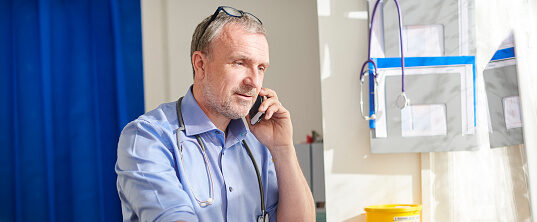Sussex Premier Health, Hastings: Important update for patients with upcoming appointments
Sussex Premier Health, Hastings: Important update for patients with upcoming appointments
Replacement can reduce pain and increase function and mobility.
An ankle replacement is an operation to remove the diseased and damaged parts of the ankle and replace them with an artificial joint.
An ankle replacement is an operation to remove the diseased and damaged parts of the ankle and replace them with an artificial joint.
You will have a formal consultation with a healthcare professional.
During this time, you will be able to explain your medical history, symptoms and raise any concerns that you might have.
We will also discuss with you whether any further diagnostic tests, such as scans or blood tests, are needed. Any additional costs will be discussed before further tests are carried out.

Ankle replacement is carried out under a general anaesthetic or a spinal epidural.
The surgeon will make a cut in front of the ankle to expose the ankle joint. All tendons, nerves and blood vessels will be preserved, and only damaged bone and cartilage will be removed before the artificial joint is inserted.
The degenerated natural surfaces of the ankle joint are replaced with an artificial cover known as prosthesis.
The ankle replacement is made up of three components. Two components are fixed to the joint. One of these is fixed to the tibia (lower end of the shin bone) and is flat and integrated into the bone with a short stem. The other one is fixed to the talus (top of the foot bone) and is curved and fixed into place with pegs. The third component is in the middle and remains mobile. This allows for the greatest range of movement and reduces stress between the bone and the implants.
All of the components are covered in a bioactive coating which encourages the patient’s own bone to grow into artificial fixtures. This will hopefully preserve the movement that they already had and facilitate extra mobility.
The cut is then closed with stitches and a splint, lightweight cast or brace may be fitted to prevent the ankle from moving.
Ankle replacement surgery at Essex’s Spire Wellesley private Hospital is open to all. If you do not have private medical insurance and would like to cover the cost of your own treatment, please call us for a fixed package price on 01702 447 926.
The expected length of stay is 1-2 nights. This depends on each individual patient and will be set once you have seen the consultant.
Following surgery, no weight must be put upon the treated ankle. Walking assistance such as crutches can be used to aid mobility.
Physiotherapy is important to help improve the ankle’s full range of movement and to gradually weight bear.
Recovery can take up to six months post-surgery and it can be up to a year before the patient is fully recovered and the ankle replacement surgery can be completely evaluated.
Even after you’ve left hospital, we’re still looking after you every step of the way. After an ankle replacement, typically our consultants will want to see you after your procedure to see how you are doing.
If you have any questions or concerns about your recovery, we’re ready to help.

Ankle arthroscopy is a surgical procedure allowing consultants to treat ankle problems. A small camera is inserted into the ankle joint, displaying an image on a television screen. The consultant uses these images to guide miniature surgical instruments to correct and repair the damage.
There are different types of ankle surgery and arthroscopy is applied in a variety of different ways to treat foot and ankle conditions. It can be used to diagnose problems by providing the surgeon with a clear image of all the joints and structures inside the foot and ankle.
Ankle arthroscopy may be used to perform the following:
Arthritic joint debridement
Osteoarthritis and injury can result in excessive scar tissue and diseased cartilage forming in the joint. Arthroscopy removes the diseased parts of the joint, along with any bone spurs or loose fragments of bone.
Arthroscopy following an injury
Chronic ankle symptoms can arise following a sprain or injury. The ligaments can be torn and the cartilage can be damaged. This damage can be treated by arthroscopy.
Footballer’s ankle
A common problem for people involved in kicking sports – a large spur of bone at the front of the ankle can be painful when the foot is extended. The spur can be removed by arthroscopy.
Symptoms
Our patients are at the heart of what we do and we want you to be in control of your care. To us, that means you can choose the consultant you want to see, and when you want. They’ll be with you every step of the way.
All of our consultants are of the highest calibre and benefit from working in our modern, well-equipped hospitals.
Our consultants have high standards to meet, often holding specialist NHS posts and delivering expertise in complex sub-specialty surgeries. Many of our consultants have international reputations for their research in their specialised field.
We’ve tried to make your experience with us as easy and relaxed as possible.
For more information on visiting hours, our food, what to pack if you’re staying with us, parking and all those other important practicalities, please visit our patient information pages.
Our dedicated team will also give you tailored advice to follow in the run up to your visit.
Speak to a member of our team